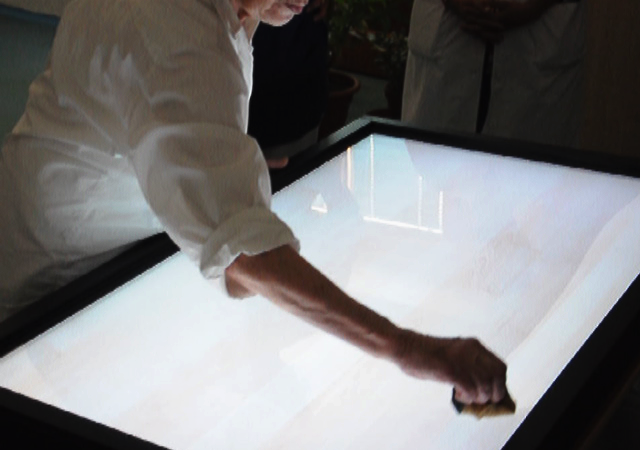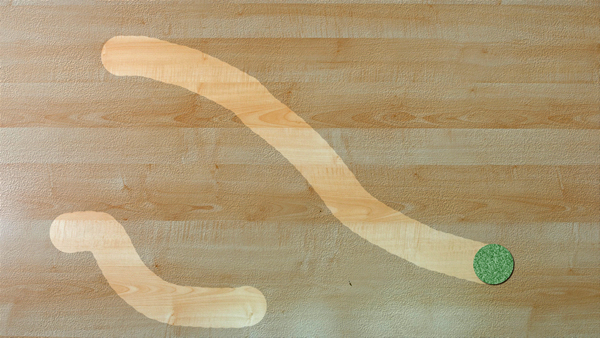This project concerns the design and development of a multi-touch system that provides innovative tools for neurocognitive and neuromotor rehabilitation for senile diseases. This project comes to life thanks to the collaboration between MICC, the Faculty of Psychology (University of Florence) and Montedomini A.S.P., a public agency for self sufficient and disabled elders that offers welfare and health care services.

A session of rehabilitation at Montedomini
The idea behind this project is to apply high-tech interactive devices to standard medical procedures used to rehabilitate desease patients with neurocognitive and neuromotor deficits. This new approach can offer new rehabilitative paths concerning digital training activities which means an advance upon conventional “pen and paper” approach.

Natural surface for neurocognitive and neuromotor rehabilitation
Such digital exercises will focus on:
- attention
- memory
- perceptual disturbances
- visuospatial disturbances
- difficulties in executive functions
This new training tools based on interactive tables will be able to increase the stimulation of the patiens neuroplastic abilities. Our new rehabilitative paths, in fact, will provide:
- audio-visual feedback for performance monitoring;
- different difficulty degrees that can be graduated by the medical staff in relation to every single different patient through several parameters (e.g. response speed, exposure time of a stimulus, spatial distribution of stimuli, sensory channels involved, audiovisual tasks, number of stimuli to control and so on).
Innovative interactive surfaces will support the manipulation of digital contens on medium-large screens letting patiens and medical trainers interact through natural gestures for select, drag and zoom graphic objects. The interactive system will be even able to misure the activities of users storing the results of every rihabilitative session: in this way it is possible to provide a personal profile for every patient. Moreover, thanks to the collaborative nature of the system, we will introduce new training modalities which involve medical trainers and patients at the same time.
Pingback: Interface Design e progettazione grafica di media digitali interattivi: Lea Landucci
Pingback: Intervista con Nicola Torpei